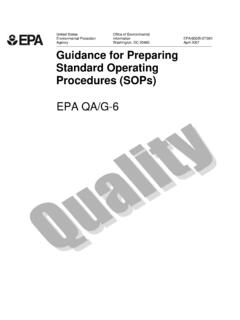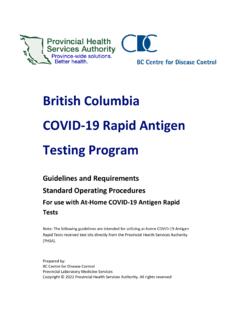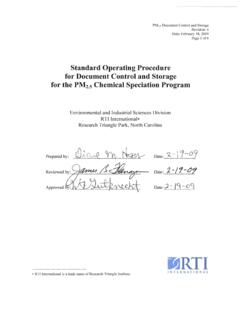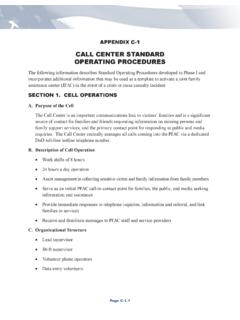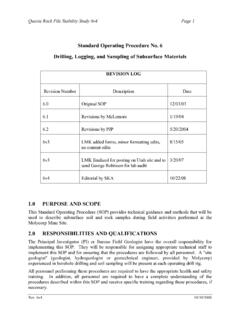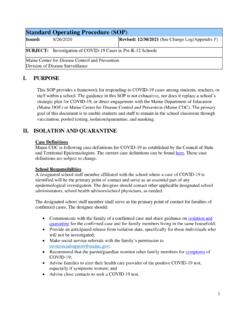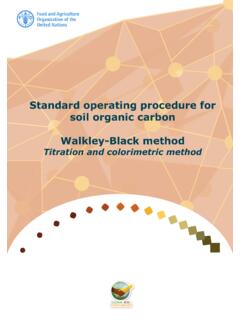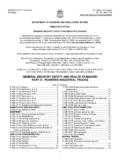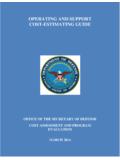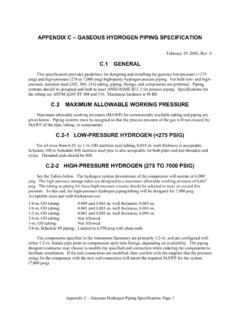Transcription of Michigan State and Local Public Health COVID-19 Standard ...
1 Michigan State and Local Public Health COVID-19 Standard operating Procedures Interim September 2021 Table of Contents Background .. 2 Standardized Surveillance Case Definition for COVID-19 .. 3 Patients with Persistent or Recurrent Positive Tests 4 Work-Related Case Classification .. 5 Inconclusive Test Results .. 5 Out-of- State Case Referrals .. 6 Deduplication and Case Classification for COVID-19 Cases 6 Emerging SARS-CoV-2 Variants and Whole Genome Sequencing .. 6 Multisystem Inflammatory Syndrome in Children (MIS-C) and Adults (MIS-A) .. 8 Test Interpretation.
2 10 At-Home 11 Testing Criteria .. 11 Higher Education Testing .. 12 Hospitalization Status .. 13 Death Reporting and Investigation .. 13 Outbreak Reporting and Investigation .. 14 Outbreak Definitions .. 14 Outbreak Investigations .. 19 Local Public Health Reporting to MDHHS .. 19 Secondary Cases .. 20 Where Outbreaks Are Counted .. 21 Referring Outbreak Associated Cases to Other Jurisdictions 21 Cases Associated with Gatherings .. 22 Recovery .. 22 Case Investigation and Contact Tracing .. 23 CDC Travel Guidance .. 28 COVID-19 Vaccine .. 29 Potential Vaccine Breakthrough / Failure Cases: Follow-up 31 Contact Tracing and Case Investigation Realignment.
3 33 Website Resources .. 33 COVID-19 Monitoring Travelers and Contacts Using the MDHHS Outbreak Monitoring System (OMS) 34 appendix 1: Sample language for letter to confirm completion of isolation/quarantine .. 43 appendix 2: Sample Death Reporting Form .. 44 appendix 3: Sample MIHAN Message for College/University Outbreaks .. 45 appendix 4: Report of COVID-19 Positive Test Result to Public Health .. 46 appendix 5: Deduplication Instructions for COVID-19 .. 47 appendix 6: COVID-19 Case Report Form (CRF) Interim Tip Sheet .. 50 2 Background On December 31, 2019, an outbreak of pneumonia in Wuhan City, Hubei Province, China was reported to the World Health Organization (WHO).
4 This outbreak is now known to be caused by the 2019 novel coronavirus. On February 11, 2020, the WHO announced the official name for the disease as COVID-19 . On March 11, the COVID-19 outbreak was characterized as a pandemic by the WHO. As of September 7, 2021, over 221 million cases have been reported worldwide, including over million In the US, over 40 million confirmed cases, including over 649,000 deaths, have been In Michigan , over 961,000 confirmed cases, including over 20,300 deaths, have been reported as of September 7, Patients with COVID-19 may experience fever, cough, dyspnea, chest tightness, pneumonia, chills, new loss of taste or smell, headache, sore throat, muscle pain, and gastrointestinal distress.
5 Healthcare providers should consider COVID-19 for patients being evaluated with fever and acute respiratory illness. The most current information from the Michigan Department of Health and Human Services (MDHHS) may be found at The MDHHS is working closely with Local Health Departments (LHDs) and the Centers for Disease Control and Prevention (CDC) during this pandemic. The MDHHS Community Health Emergency Coordination Center (CHECC), which was fully activated on February 4, 2020, is also assisting the coordination of response efforts. This includes hosting healthcare and LHD conference calls and distributing Health Alert Network messages.
6 Bureau of Infectious Disease Prevention (BIDP) staff were deployed to the EPI DESK to assist with communications and guidance and to liaise with State agencies ( , Department of Licensing and Regulatory Affairs). Duties include compiling and analyzing LHD SITREPs and providing data and epidemiologic situational awareness to the Director s SITREP and to CHECC staff to assist in decision-making. Guidance is subject to change as more is learned about the virus, as the pandemic progresses, and as CDC recommendations are updated. For the most current information and MDHHS Epidemic Orders, go to On June 22, 2021, Governor Whitmer announced measures to relax COVID-19 restrictions, increasing capacity for indoor and outdoor settings.
7 Several MDHHS COVID-19 epidemic orders were rescinded, but others remain in effect including the May 5 - Testing in Skilled Nursing Facilities, Homes for the Aged, and Adult Foster Care Facilities and the May 21, 2021 Requirements for Residential Care Facilities The CDC provides guidance for Public Health recommendations for potential risk of COVID-19 exposure, addressing travel-associated exposures, community-related exposures, and healthcare-associated exposures for healthcare professionals. COVID-19 Travel Recommendations by Destination has been posted at: For the most current information, visit: This guidance is subject to change as more is learned about the virus, the outbreak progression, and as CDC recommendations are updated.
8 1 Worldwide case counts available at the 2019-nCoV Global Cases by Johns Hopkins CSSE: #/bda7594740fd40299423467b48e9ecf6 2 US case counts available at: 3 Michigan case counts available at: 3 Standardized Surveillance Case Definition for COVID-19 On July 13, 2021, the CDC approved the Council of State and Territorial Epidemiologist (CSTE) interim position statement for COVID-19 : Update to the standardized surveillance case definition and national notification for 2019 novel coronavirus disease ( COVID-19 ). This interim position statement updates the standardized case definition for COVID-19 and retains COVID-19 as a nationally notifiable condition.
9 This supersedes the April 2020 and August 2020 CSTE COVID-19 interim position statements. The full position statement can be found at Case Classification Clinical Criteria In the absence of a more likely diagnosis: Acute onset or worsening of at least two of the following symptoms: fever (measured or subjective), chills, rigors, myalgia, headache, sore throat, nausea or vomiting, diarrhea, fatigue, congestion or runny nose OR Acute onset or worsening of any one of the following symptoms: cough; shortness of breath; difficulty breathing; olfactory disorder; taste disorder; confusion or change in mental status; persistent pain or pressure in the chest.
10 Pale, gray, or blue-colored skin, lips, or nail beds, depending on skin tone; inability to wake or stay awake OR Severe respiratory illness with at least one of the following: clinical or radiographic evidence of pneumonia, or acute respiratory distress syndrome (ARDS) Laboratory Criteria Confirmatory laboratory evidence: Detection of SARS-CoV-2 RNA in a post-mortem respiratory swab or clinical specimen using a diagnostic molecular amplification detection test performed by a CLIA-certified provider, OR Detection of SARS-CoV-2 by genomic sequencing Presumptive laboratory evidence.










